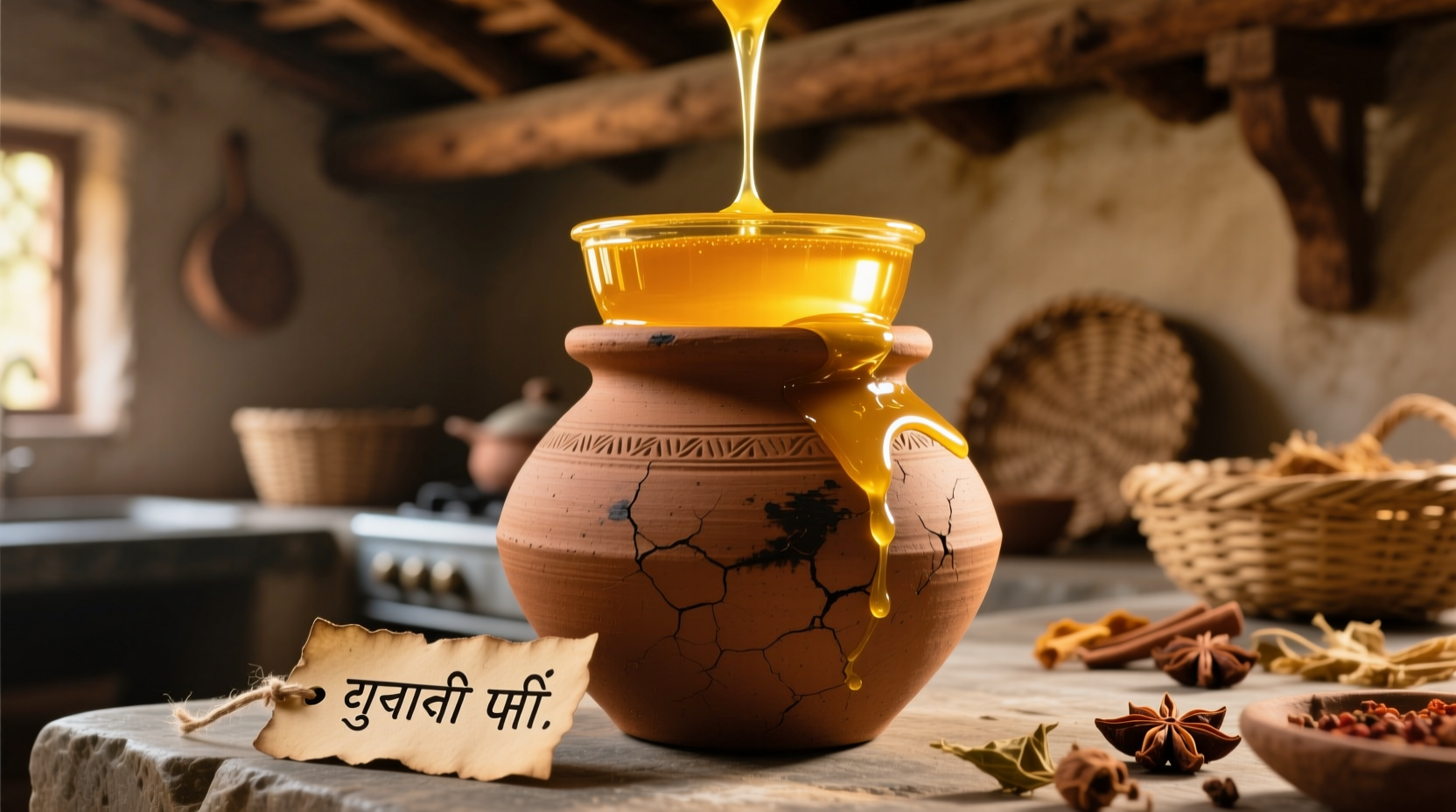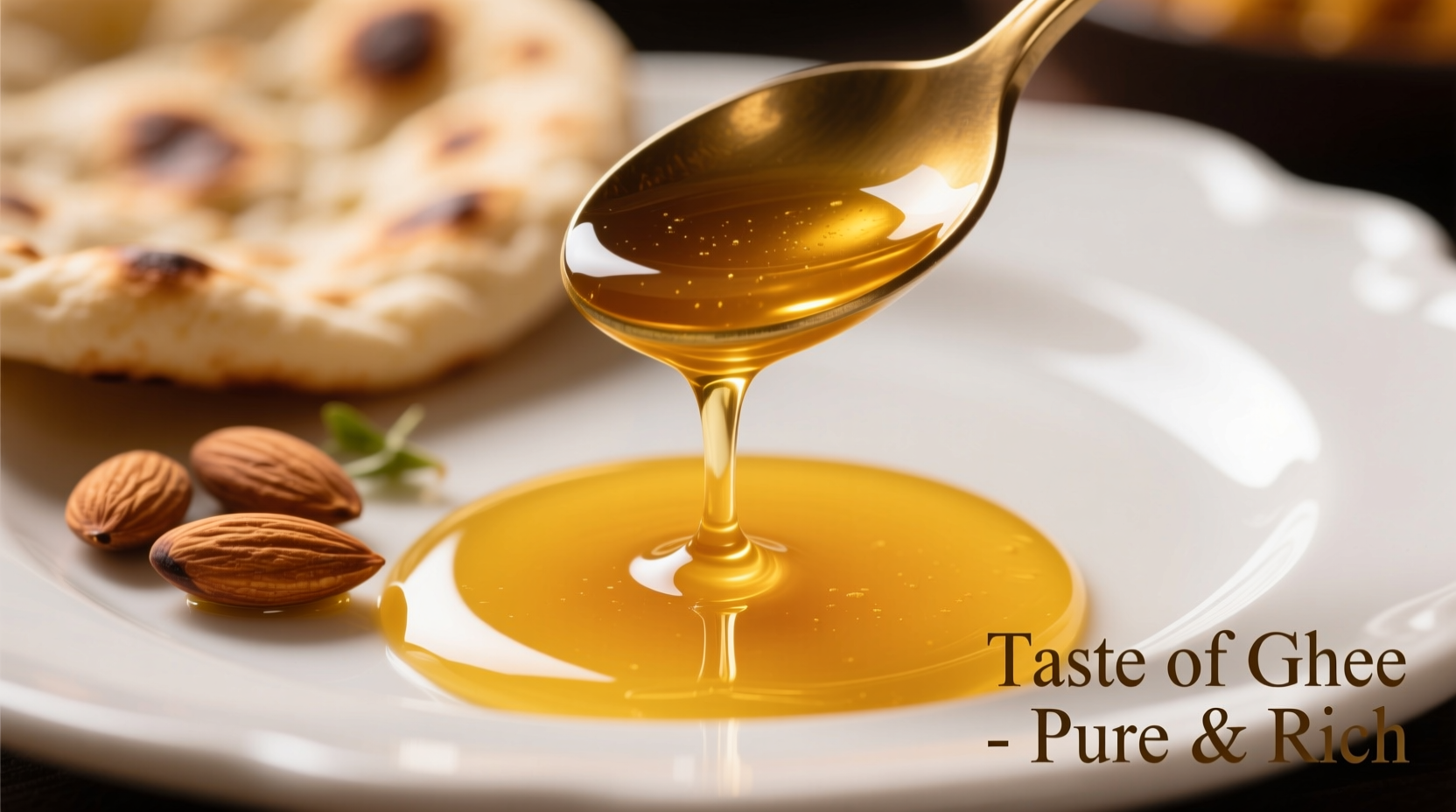Ever wondered what does ghee taste like compared to regular butter? This golden cooking fat has captivated palates for centuries across Indian, Middle Eastern, and African cuisines. Understanding its unique flavor profile helps you unlock new dimensions in your cooking—whether you're a home chef experimenting with traditional recipes or someone seeking dairy alternatives that don't compromise on taste.
The Distinctive Flavor Profile of Ghee
Ghee's taste emerges from its careful preparation process. When butter simmers slowly, milk solids separate and caramelize, creating complex flavor compounds. This transformation yields a product that's:
- Nutty and roasted – reminiscent of toasted almonds or browned butter
- Sweetly caramelized – with subtle butterscotch undertones
- Clean and pure – lacking the slight sourness of regular butter
- Rich without heaviness – delivering intense dairy flavor without milk solids
Unlike regular butter (which registers at 80-90°F on the Maillard reaction scale), ghee's extended simmering reaches 250-300°F, developing deeper flavor compounds through advanced non-enzymatic browning. This scientific process, documented in USDA FoodData Central, explains why ghee tastes more complex than its butter predecessor.
How Ghee Differs From Similar Fats
| Characteristic | Ghee | Regular Butter | Clarified Butter |
|---|---|---|---|
| Taste Profile | Nutty, caramelized, clean | Rich, slightly sour, milky | Mild buttery, less complex |
| Aroma | Roasted nuts, butterscotch | Fresh dairy | Neutral butter |
| Mouthfeel | Smooth, velvety | Creamy with slight graininess | Clean but thinner |
| Aftertaste | Pleasantly lingering, sweet | Slightly sour | Minimal |
This comparison reveals why chefs seeking what ghee tastes like in Indian cooking prefer it over regular clarified butter—the extended cooking time creates those distinctive nutty notes essential for authentic flavor.
Factors That Shape Ghee's Flavor
Several elements influence how ghee tastes in different applications:
Milk Source Matters
Cow ghee offers a delicate, sweet profile ideal for subtle dishes. Buffalo milk ghee (common in South Asia) delivers a richer, more robust flavor with deeper caramel notes. Goat milk ghee provides a distinctive tang that works well in specific regional cuisines.
Cooking Technique Variations
Traditional Indian desi ghee simmers until milk solids turn deep golden brown, creating pronounced nuttiness. Modern commercial production often stops at light golden, yielding milder flavor. The difference explains why homemade ghee taste differs from store-bought varieties.
Regional Production Methods
According to culinary research from the Culinary Institute of America, Indian subcontinental ghee develops more complex flavor compounds due to longer simmering times compared to Middle Eastern samn, which prioritizes purity over flavor development.

How Ghee Performs in Cooking Applications
Understanding what ghee tastes like when cooked helps maximize its potential:
High-Heat Cooking
With a smoke point of 485°F (compared to butter's 300°F), ghee maintains its flavor integrity during searing and frying. Unlike oils that develop bitter notes at high temperatures, ghee's flavor actually deepens, enhancing roasted vegetables and proteins without burning.
Flavor Carrying Capacity
Ghee's unique molecular structure allows it to carry and amplify other flavors. When making tadka (tempering spices), ghee extracts more essential oils from spices than neutral oils, creating richer flavor foundations. This explains why ghee taste in curry recipes creates more complex flavor layers.
Cool Applications
When cooled, high-quality ghee solidifies into a smooth, creamy texture perfect for spreading. Unlike butter, it won't taste watery or separate, maintaining its nutty sweetness in baked goods and sauces.
Common Flavor Misconceptions
Many wonder does ghee taste burnt? Properly made ghee shouldn't taste burnt—the milk solids caramelize rather than char. If your ghee tastes bitter, it's likely overcooked. Authentic ghee has a pleasant roasted note, not a burnt character.
Another frequent question: why does my ghee taste different? Variables include milk source, simmering duration, and even the type of cooking vessel used. Traditional clay pot preparation imparts subtle earthy notes absent in stainless steel production.
Practical Flavor Applications
Now that you understand what ghee tastes like compared to butter, here's how to use it effectively:
Best Pairings for Ghee's Flavor
- Rice dishes – enhances nuttiness in basmati rice
- Roasted vegetables – caramelizes natural sugars beautifully
- Sweet applications – elevates desserts with subtle butterscotch notes
- Spice blends – carries complex masala flavors more effectively than oils
When to Choose Ghee Over Alternatives
Opt for ghee when you want:
- Dairy richness without lactose concerns
- High-heat cooking with flavor enhancement
- Authentic Indian or Middle Eastern dish preparation
- A more complex flavor profile than neutral oils provide
Maintaining Optimal Flavor
Proper storage preserves ghee's delicate flavor profile. Keep it in an airtight container away from light. Traditional clay pots maintain optimal temperature and breathability. High-quality ghee should remain golden yellow—darkening indicates oxidation and flavor degradation.
When evaluating how to tell if ghee is good, trust your senses: fresh ghee smells sweet and nutty, not rancid or sour. The texture should be smooth, not grainy or separated.











 浙公网安备
33010002000092号
浙公网安备
33010002000092号 浙B2-20120091-4
浙B2-20120091-4